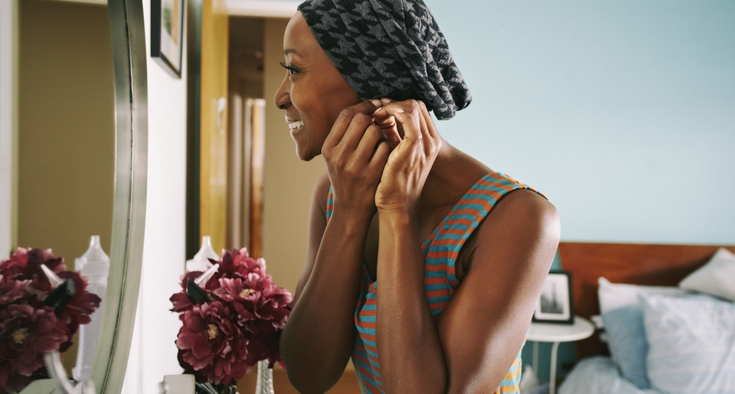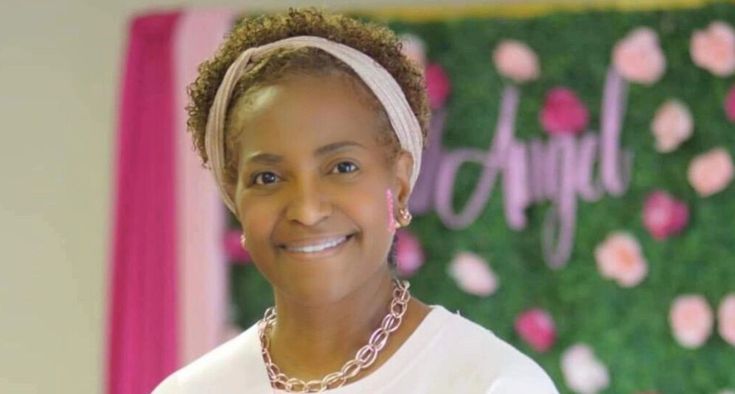Chemotherapy can save the life of someone with cancer.
But it comes with a long list of potential side effects, including one nearly everyone’s aware of – hair loss.
Chemotherapy targets rapidly growing cells – and that includes those in the hair follicles. And it may not just affect the scalp. Some people undergoing chemo lose eyebrows, eyelashes, armpit hair and hair elsewhere on their bodies.
While chemo is generally the culprit when a cancer patient loses hair, radiation – at some doses – can also lead to hair loss – particularly for those receiving radiation for head and neck cancers.
It’s hard to lose your hair. It’s like losing part of your identity. And a grieving process often accompanies the loss.
In a recent essay published in The Atlantic, breast cancer survivor Miranda Featherstone wrote, “Without hair I feel diminished, undone. My grief over my hair exceeds, I think, my grief for my disappeared breasts, or my health more generally. There are moments when I worry it will swallow me whole, moments when it inches dangerously close to despair.”
Supportive care throughout your cancer journey.

Other people actually embrace their hair loss. Gigi Sadorra, a breast cancer patient we wrote about last fall, got a mohawk while she still had hair. Once it began to fall out, she sported a pixie. When her pixie started thinning, she wore berets and beanies.
“When I still had the mohawk, one night while taking a shower, I grabbed a handful of hair,” Sadorra said. “At that moment, it sunk in that the chemo was taking its toll. It was then that the physical reality of cancer kicked in. But slowly losing my hair … was not as traumatic as I thought it would be. I just went with the flow and got creative with the beret/beanie style because I knew it would eventually grow back. I mean, it's just hair.
“Today, my hair is growing back beautifully! It’s thicker than before, like I got a do-over! It's growing back to my natural color for my age – the salt-and-pepper look. I’ve had compliments on the color and how soft it is; it’s like petting a puppy. The more it grows, the wavier it's getting. I’m excited to see how it'll look by summer.”
We talked to Dr. Anastasia Tsagianni, an oncologist and hematologist with Novant Health Cancer Institute - Forsyth in Winston-Salem, about hair loss – a side effect of cancer treatment many people dread. Note: Tsagianni (pronounced Sah-gee-ah-nee) treats people with different cancer types, including women with breast cancer.
What to know about hair loss during cancer treatment
How common is the worry about hair loss among your patients?
It’s so common that I now bring it up in an initial discussion with a patient. I know my patient is likely to ask, so I go ahead and mention the elephant in the room.Is there a way you can tell patients what the likelihood is that they’ll lose their hair?
The chance of hair loss depends on the type of chemotherapy a patient is on. There are certain types that will almost certainly lead to hair loss, and I want patients to be aware if that’s the case. For instance, taxane (Taxol or Taxotere) is commonly used in breast cancer, and it causes temporary hair loss almost universally.
Top scores for safety in NC
Novant Health just received the most ‘As’ for patient safety in North Carolina from The Leapfrog Group. With a focus on safety, quality and patient experience, the national, industry-leading nonprofit, evaluates and assigns letter grades ranging from A to F to hospitals across the country. Novant Health’s hospitals with “A” grades outperform 70% of hospitals nationwide for safety and quality.
What does hair loss look like for people on chemo? Will they lose all their hair? Might it just thin out a bit rather than falling out completely?
Some people find their hair unaffected by chemo. Some will experience thinning or shedding, and others will lose all of it. Of course, the immunotherapy we use often nowadays doesn’t typically affect the hair. (Immunotherapy is fast-evolving form of treatment that harnesses the body’s own immune system to fight cancer.)
How soon does hair loss happen once a patient starts chemo?
Hair loss, when it happens, is usually noticeable after about three weeks of treatment. The hair on your scalp is usually the first to go. But there are no firm guidelines; everyone responds differently.
What are some ways your patients have handled the possibility of losing their hair? I had chemo in 2017, and when I began to see clumps of my hair falling out in the shower, I asked my hairstylist to shave it so I didn’t have to experience the loss little by little. I wanted to rip off the Band-Aid, so to speak.
Some of my patients have chosen to do as you did and shave it off. We also give patients a list of resources to help them with hair loss, including places where they can buy wigs for those who want to go that route.
There’s also a special “cooling cap” or “cold cap” patients can wear before, during and after chemo infusions that helps reduce the amount of blood going into the scalp area. It lessens the amount of chemo that reaches the hair follicles and decreases the amount of hair loss that might otherwise occur. Studies have shown that about 60% of women who used scalp cooling lost less than half their hair, and it also allowed for faster hair recovery in cases where alopecia (hair loss) was not prevented.
Do you have tips on what you should – and should not – say to someone you run into who has lost their hair due to chemo?
It’s important for cancer patients to remember that the hair loss, if it occurs, is a temporary thing that will stop when treatment is over. I remind my patients who do lose their hair that they won’t always be bald.
That said, I think it’s more helpful for people to acknowledge the hair loss – and the cancer – than avoiding a potentially uncomfortable topic. And that acknowledgment can be as simple as saying you’re sorry.
You mentioned that hair loss is only temporary. How long does it take for it to come back in?
Usually, six to eight weeks after the last chemo treatment.
The American Cancer Society offers tips on “Coping with Hair Loss” at their website, cancer.org.









